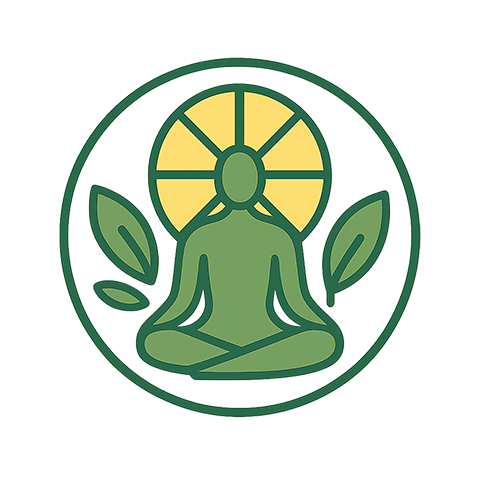In today’s hyperconnected world, the hum of notifications has become the new background music of daily life. Phones, tablets, laptops, and smart appliances are woven into the fabric of work, entertainment, and even sleep. While technology offers convenience and instant access to information, it also fragments attention and fosters a relentless cycle of scrolling. A digital detox is no longer a luxury; it is a necessary pause that restores focus, nurtures emotional well‑being, and re‑establishes the human connection that technology often dilutes. By deliberately stepping away from screens and re‑engaging with the physical world, we can reclaim the quiet moments that are essential for mindful living.
The Science of Digital Overload
Modern research consistently links excessive screen use with increased stress hormones, disrupted circadian rhythms, and a higher incidence of mood disorders. When the brain receives a constant stream of dopamine‑inducing stimuli—likes, new messages, flashy ads—it enters a state of hyperarousal that makes it difficult to wind down. Even brief pauses, such as a 30‑minute walk without a phone, have been shown to lower cortisol levels and improve sleep quality. These physiological changes demonstrate why a structured break from technology is more than a mental exercise; it is a physiological necessity for health.
- Reduction in cortisol and adrenaline levels
- Improved sleep latency and depth
- Lowered risk of anxiety and depressive symptoms
- Enhanced ability to sustain attention on a single task
Why Tai Chi? A Gentle Bridge Between Body and Mind
When one looks for a practice that harmonizes breath, movement, and intention, Tai Chi emerges as an ideal partner for digital detox. This ancient Chinese discipline, rooted in martial arts and Taoist philosophy, emphasizes slow, deliberate motions coupled with mindful breathing. Unlike high‑intensity workouts, Tai Chi’s gentle flow is accessible to all ages and fitness levels, making it a versatile tool for reducing digital fatigue. Practitioners often report a sense of calm, heightened body awareness, and a clearer mental focus—qualities that align perfectly with the goals of a technology‑free break.
“Tai Chi teaches us that the fastest progress in life is made by going slow,” says a veteran instructor who has guided thousands through mindful movement. “When the mind is quiet, the body follows.”
Core Principles of Tai Chi for Digital Detox
Three pillars of Tai Chi practice serve as a framework for disengaging from constant digital stimulation:
- Presence – Focusing on the here and now eliminates the tendency to ruminate on past or future notifications.
- Balance – Both physical stance and emotional equilibrium are cultivated, providing a grounding effect against the rapid oscillations of online engagement.
- Breath – Coordinated breathing slows the nervous system, creating a counter‑signal to the rapid pulse triggered by scrolling.
Designing Your Digital Detox Routine
A successful detox is not about banning technology forever; it’s about setting intentional boundaries that allow technology to serve rather than dominate life. Below is a practical framework that blends Tai Chi practice, mindful breathing, and technology curbs.
- Define Tech-Free Zones
- Home bedroom: No screens after sunset.
- Dining area: Focus on conversation, not devices.
- Workspaces: Allocate specific “no‑device” hours each day.
- Schedule Tai Chi Sessions
- Morning: 10‑minute flow to start the day grounded.
- Mid‑afternoon: 5‑minute pause during work to reset focus.
- Evening: 15‑minute wind‑down routine before bed.
- Practice Digital Mindfulness
- Use apps that track usage and set alarms when limits are exceeded.
- Replace mindless scrolling with reading a physical book or a newspaper.
- Engage in face‑to‑face conversations, even if they are brief.
- Reflect and Adjust
- Keep a journal of how you feel before and after the detox.
- Note improvements in sleep, stress, and interpersonal relationships.
- Refine boundaries based on observations and comfort level.
Success Stories: When Technology Meets Mindfulness
Meet Sarah, a 32‑year‑old project manager who spent eight hours a day on email and Slack. After a 21‑day digital detox that incorporated daily Tai Chi, she reported a 40% decrease in sleep latency and a noticeable reduction in work‑related anxiety. Her coworkers observed a shift in her communication style—from reactive to reflective—improving team dynamics and project outcomes. Sarah’s experience illustrates that when technology use is intentional, the benefits extend far beyond personal well‑being into professional productivity and creativity.
Beyond the Individual: Collective Digital Health
While personal detoxes have immediate benefits, the ripple effects can reach broader communities. Schools that integrate short Tai Chi breaks during the school day report lower absentee rates and higher engagement scores. Corporate wellness programs that offer technology‑free workshops often see increased employee retention and a stronger sense of corporate culture. These macro‑level outcomes underscore that digital detox is a public health strategy, not just a private habit.
Practical Tips for Maintaining Long-Term Balance
- Set a “tech curfew”—no devices after 9 p.m.
- Use the “two‑hour rule”: no screens for the first two hours after waking up.
- Schedule a monthly “no‑device” day to reset habits.
- Replace social media scrolling with a hobby that encourages tactile engagement.
Final Thoughts: Re‑connecting the Human Thread
Digital detox is less about rejecting technology and more about reclaiming intentionality in its use. When we weave Tai Chi’s deliberate movements and mindful breath into a structured pause from screens, we create a safe space for the mind to breathe, the body to align, and relationships to deepen. In a world that is increasingly mediated by pixels, this slow, intentional practice reminds us that the most meaningful interactions remain human, face‑to‑face, and rooted in the present moment. Embracing this balance not only restores mental clarity and physical health but also enriches the tapestry of our daily lives with authenticity, presence, and genuine connection.



